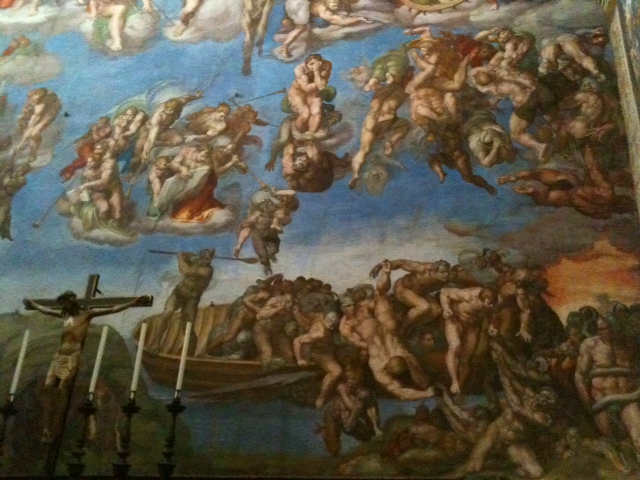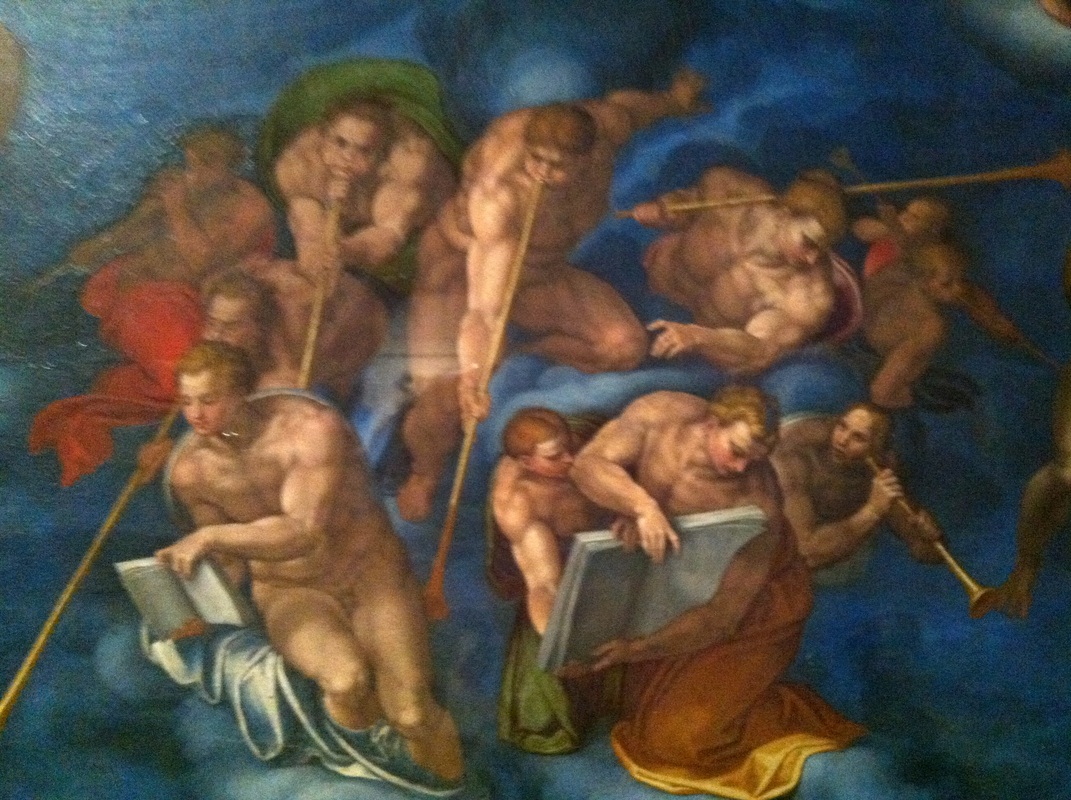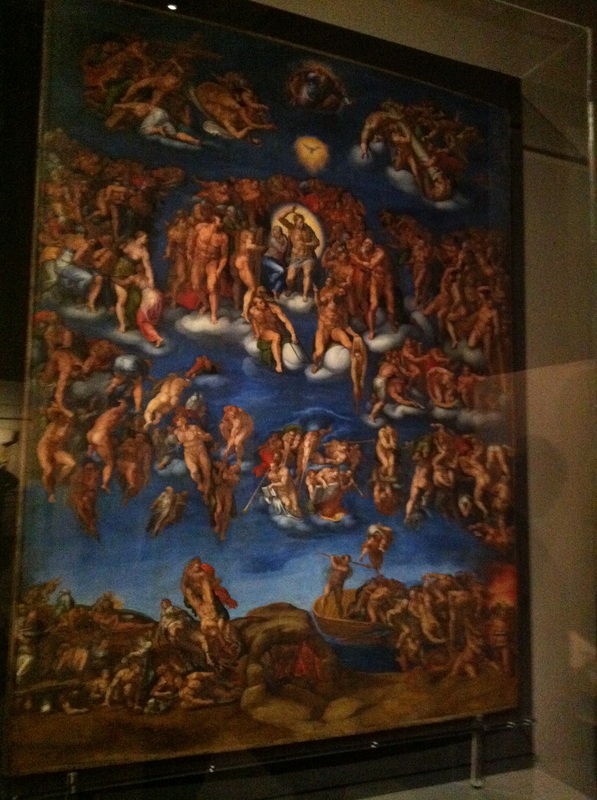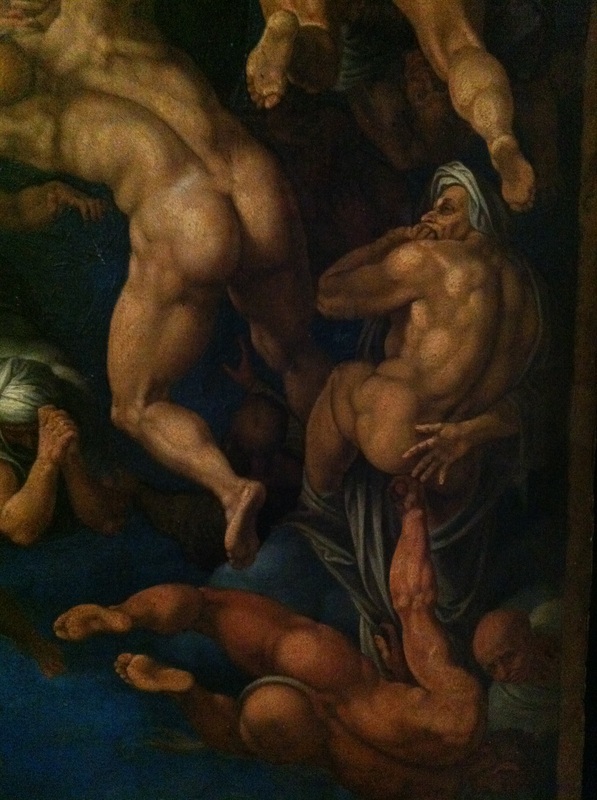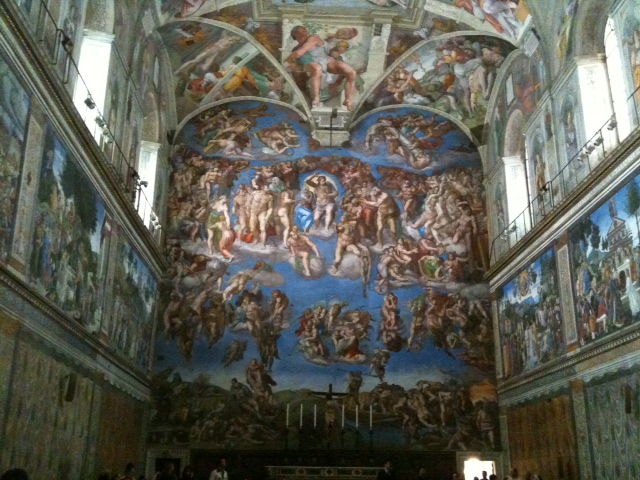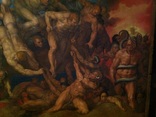 The entrance to Hell
The entrance to Hell | It’s a tempera painting on wooden table that measure cm 190 x 145, commissioned by the Cardinal Alessandro Farnese the young who feared that Michelangelo’s work was going to be cancelled due to the heavy criticism it aroused. This painting has a great importance being the one witnessing Michelangelo’s original work before it was altered in 1565 by Daniele da Volterra who covered the the naked bodies. Venusti’s copy belongs to Capodimonte Museum in Naples. It has been a real pleasure for me to admire such a detailed work revealing the truth about Michelangelo’s original work. Michelangelo worked on the altar wall of the Sistine Chapel between 1535 and 1541. Before starting painting he cancelled the original decorations depicting two scenes from the old and new testament that dated to the 1483 original Chapel’s decoration, walled two windows, and realized a sloping wall to prevent the dust from leaning against the painted wall. Michelangelo’s Last Judgment measures (13,7x12,2 m), covering a surface of 167 square meters. Every single figures was sketched, cartoons were made and large scaffoldings were realized before the painting started. The days of painting were 450 and Michelangelo’s age was 60 to 66 years old. Michelangelo’s work dramatically describes Christ decision on the fate of Humanity. The Last Judgment aroused great debates between the ones who praised Michelangelo’s genius and others criticizing a decoration they considered violent and obscene. Michelangelo’s naked bodies were one of the more criticized aspects of his work. It has to be reminded that in the same period the Roman Catholic Church was facing the Protestant Reform, trying to respond to the many criticisms the Lutheran had expressed. The Council of Trent 1545 to 1563 asserted many statements including the role of art. Art works should aim to state the reasserted dogmas of the Catholic religion: artists were given precise instructions about what to paint and their work was supervised by intellectuals. Renaissance was over. During the papacy of Paul the IV and Pius the IV Michelangelo risked to be judged by the inquisition and his Last Judgment to be cancelled. Finally in 1564 the Council of Trent committed Daniele da Volterra to render the last Judgment acceptable by covering the nudes parts of Michelangelo’s bodies. |
